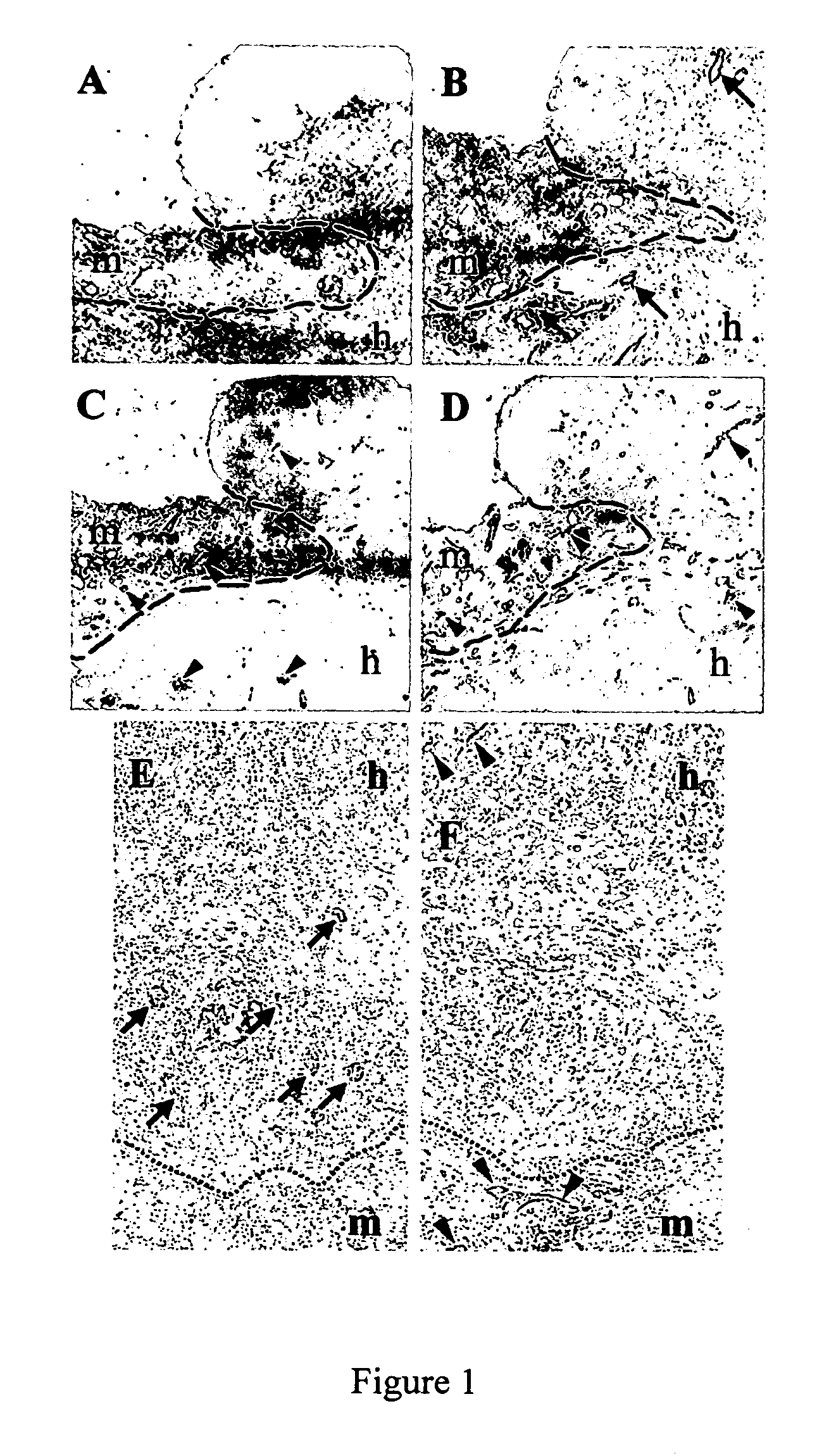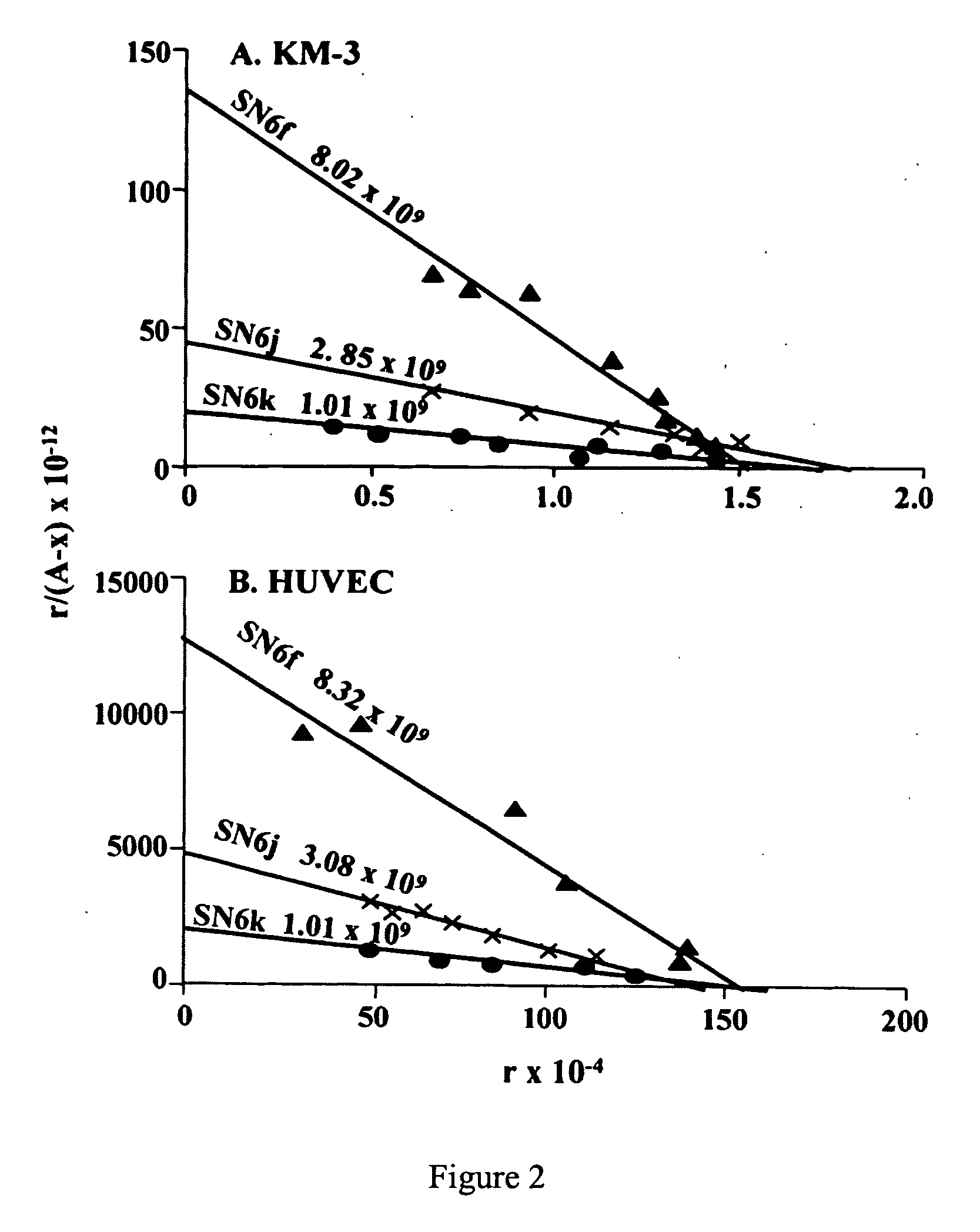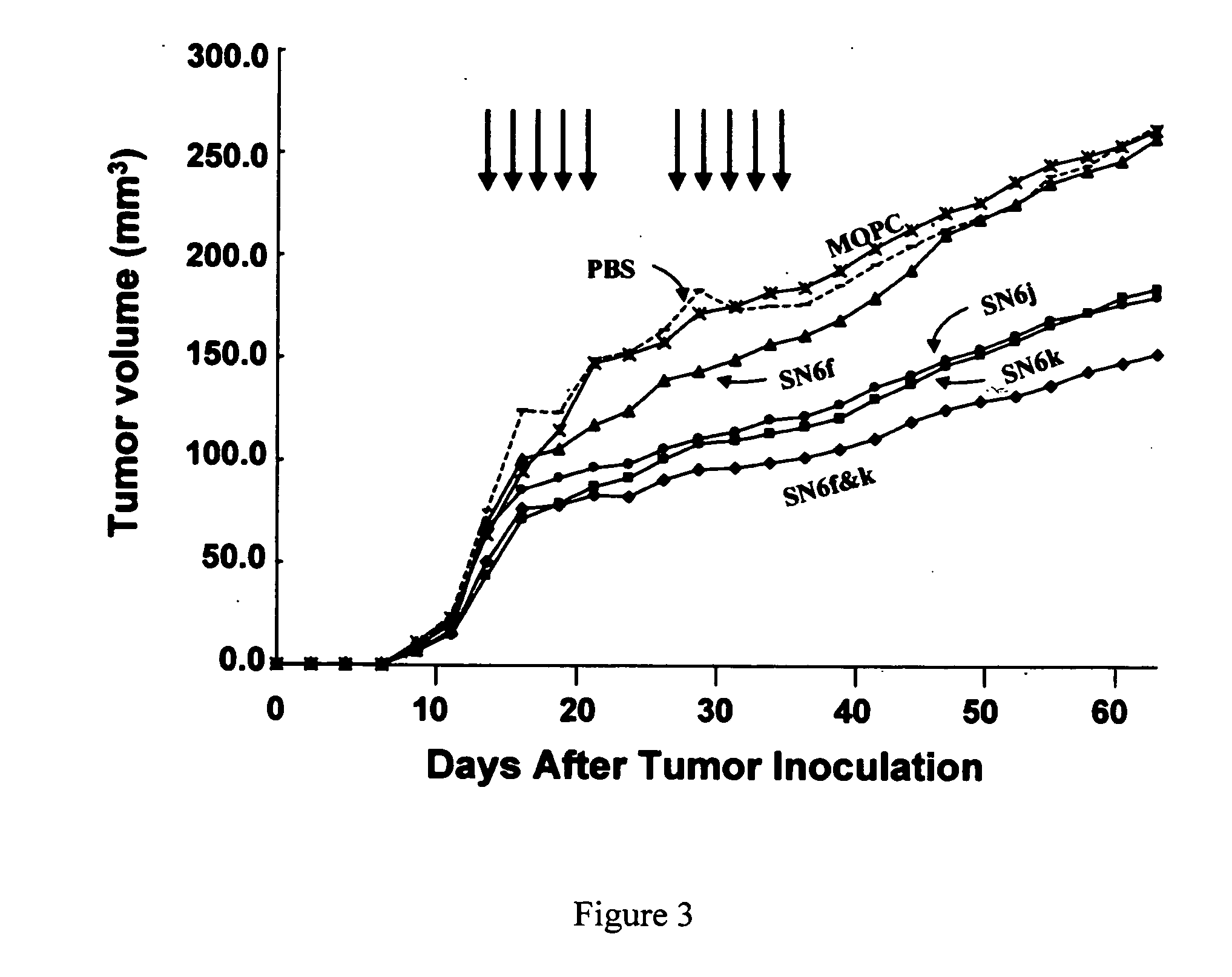Method for increasing the efficacy of anti-tumor agents by anti-endoglin antibody
a technology of anti-endoglin and anti-tumor agents, which is applied in the field of cancer therapy, can solve the problems of increased risk of metastasis, selective reduction of tumor tissue, and undesirable complications, and achieve the effect of enhancing the efficacy of chemotherapeutic agents
- Summary
- Abstract
- Description
- Claims
- Application Information
AI Technical Summary
Benefits of technology
Problems solved by technology
Method used
Image
Examples
example 1
[0024] This Example describes the materials and methods used to demonstrate the present invention as further illustrated by the subsequent Examples.
[0025] mAbs and Reagents. Anti-human EDG monoclonal antibodies (mAbs) SN6a, SN6f, SN6j and SN6k that cross-react weakly with mouse endothelial cells were used (10, 15, 26). A non-crossreactive anti-EDG mAb, SN6h (14, 25), and an isotype-matched murine control IgG (MOPC195 variant, IgG1-k; ref. 26) were also used. Murine anti-human CD31 mAb JC / 70A (IgG1-κ) and cyclophosphamide (CPA) were obtained from DAKO™ (Carpinteria, Calif.) and Sigma™ (St. Louis, Mo.), respectively. Doxorubicin (DOX) was purchased from Sigma™. Rat anti-mouse EDG (CD105) mAb MJ7 / 18 (rat IgG2a-κ), rat anti-mouse CD31 mAb 390 (rat IgG2a-κ) and an isotype-matched rat control IgG (R35-95; IgG2a-κ) were purchased from PharMingen™ (San Diego, Calif.). InnoGenex™ Mouse-on Mouse Iso-IHC Kit, peroxidase substrate kit DAB (SK-4100), and LSAB Kit Peroxidase Universal (K568) wer...
example 2
[0037] Immunostaining of Blood Vessels in Tissues from Human Skin / SCID Mouse Chimeras. Vessels in the human skin grafts generated as described in Example 1 above and the adjacent mouse tissues were analyzed by immunohistochemical staining with species-specific anti-endothelial mAbs, i.e., SN6h (an anti-human CD105 mAb), anti-human CD31 mAb, anti-mouse CD105 mAb and anti-mouse CD31 mAb. The ratio of human vessels to mouse vessels in the completely healed human skin grafts and in the skin grafts bearing large MCF-7 tumors was determined in serial sections of the tissues by counting human vessels and mouse vessels. Human vessels were detected by immunostaining the tissue sections with a mixture of SN6h and anti-human CD31 mAb, whereas mouse vessels were detected by immunostaining with a mixture of anti-mouse CD105 mAb and anti-mouse CD31 mAb. Blood vessels in the completely healed (8 weeks after grafting) human skin without tumors consisted of 43.5% human vessels and 56.5% mouse vessel...
example 3
[0041] Antibody Avidity and Number of Available Epitopes on EDG-Expressing Cells. Scatchard plot analyses of direct binding of radiolabeled SN6f, SN6j and SN6k to EDG-expressing KM-3 leukemia cells and subconfluent proliferating HUVECs were carried out (FIG. 2). The results show equilibrium constants of 8.02×109, 2.85×109, and 1.01×109 liters / mol, respectively, for SN6f, SN6j and SN6k to KM-3 cells. The equilibrium constants to HUVECs are 8.32×109, 3.08×109, and 1.01×109, respectively, for SN6f, SN6j and SN6k.
[0042] The results show that these mAbs bind to KM-3 cells and HUVECs with very similar avidities. The three mAbs all show good binding avidities and the rank order of these mAbs for antibody avidity is SN6f>SN6j>SN6k. In the same analyses of Scatchard plot, the average number of antibody molecules bound per KM-3 cell was estimated to be 1.25×104, 1.75×104 and 1.70×104, respectively, at antibody saturation. The number per HUVEC was estimated to be 1.56×106, 1.13×109 106 and 1....
PUM
| Property | Measurement | Unit |
|---|---|---|
| thickness | aaaaa | aaaaa |
| diameter | aaaaa | aaaaa |
| body weight | aaaaa | aaaaa |
Abstract
Description
Claims
Application Information
 Login to View More
Login to View More - R&D
- Intellectual Property
- Life Sciences
- Materials
- Tech Scout
- Unparalleled Data Quality
- Higher Quality Content
- 60% Fewer Hallucinations
Browse by: Latest US Patents, China's latest patents, Technical Efficacy Thesaurus, Application Domain, Technology Topic, Popular Technical Reports.
© 2025 PatSnap. All rights reserved.Legal|Privacy policy|Modern Slavery Act Transparency Statement|Sitemap|About US| Contact US: help@patsnap.com



